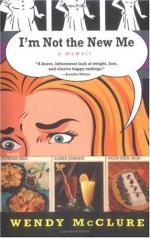At the outbreak of the Revolution David abandoned painting; and on January 17, 1793, as a member of the Convention, voted for the execution of Louis XVI. It was during this period that were painted his pictures of Lepelletier and Marat, in which his cold, statuesque, and correct manner was revivified and warmed to life—paradoxically enough, to paint death. A friend of Robespierre, he was carried down at the overthrow of the “little lawyer from Arras,” and imprisoned in the Luxembourg. His wife—who had left him at the outset of his political life, horrified at the excesses of the time—now rejoined him in his misfortune; and inspired by her devotion, David made the first sketch of the Sabine women.
Released from prison October 26, 1795, he returned to his art; and in 1800 the Sabines was exhibited in a room in the Louvre, where it remained for more than five years, during which time it constantly attracted visitors, and brought to the painter in entrance fees more than thirteen thousand dollars. Early in the career of Napoleon, David had attracted his attention; and he had vainly endeavored to induce the artist to accompany him on the Egyptian campaign. On the accession of Napoleon as Emperor, therefore, we find in the Salon catalogues, “Monsieur David, first painter to his Imperial Majesty,” in place of plain “Citizen David” of the Revolutionary years.
Napoleon ordered from David four great paintings. The Coronation and the Distribution of Flags alone were painted when the overthrow of the Empire, and the loyalty of David to his imperial patron, caused him to be exiled in 1816. He went to Brussels, where, on December 29, 1825, he died. The Bourbons, masters of France, refused to allow his body to be brought back to his country; but Belgium gave him a public funeral, after which he was laid to rest in the Cathedral of Brussels.
[Illustration: POPE PIUS VII. FROM A PAINTING FROM LIFE BY DAVID, NOW IN THE LOUVRE.
Pius VII. was the Pope who, in 1804, consecrated Napoleon I. as Emperor of France. Later he opposed Napoleon’s aggressions, and was imprisoned for it, first in Italy and afterwards in France. In 1814 he recovered his freedom and his dominions, temporal as well as spiritual. The above picture is, perhaps, the best example of what may be termed the official portrait (as the preceding picture is of the familiar portrait) of David. It was painted in 1805, in the apartment assigned to the Pope in the Tuileries.]
This dominant artistic influence of France in the first quarter of this century is not entirely extinguished to-day. The classical spirit has never been entirely absent from any intellectual manifestation of the French; but in David and his pupils it was carried to an extremity against which the painters of the next generation were to struggle almost hopelessly. Time, which sets all things right, has placed David in his proper place; and while to-day we may admire




